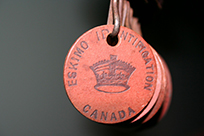Page Content

The importance of learning, respecting and uplifting names
Lynn Farrugia, Program Co-ordinator, Intercultural Services, Edmonton Public Schools
Melissa Purcell, Executive Staff Officer, Indigenous Education, ATA
Names contribute to and reflect identity. Deepening an understanding of names can uncover and recover connections to other integral components of identity, such as family, geography, tradition, culture and language. To foster culturally responsive environments, teachers and school leaders have an important role in learning, respecting and uplifting names in our classrooms, schools and communities.
Support name reclamation
A resurgence of reclaiming and uplifting names for peoples, communities and places is spreading across the province and country. This movement recognizes the detrimental impacts on identity, kinship and sense of belonging of the imposition of Eurocentric names on Indigenous peoples or the forcible replacement of Indigenous names with numbers. Such actions were enforced through racist assimilation and colonization tactics, such as Canada’s Indian Residential Schools, the Eskimo Identification Tag System and Project Surname.
Demonstrating the inherent importance of names, the Truth and Reconciliation Commission of Canada’s Calls to Action included a call to “enable residential school Survivors and their families to reclaim names changed by the residential school system by waiving administrative costs for a period of five years for the name-change process and the revision of official identity documents.”
In reclaiming their names, people reclaim and reconnect to their identity.
Learning, respecting and uplifting names becomes a form of advocacy and truth-seeking. With work being undertaken across Canada to bolster reclamation efforts, teachers and school leaders can also embrace reclaiming and honouring names.
Lead and learn by example
Taking the time to learn how to pronounce a student’s name and supporting students in reclaiming their original name or preferred name are simple but crucial steps in ensuring that each and every student feels valued within your classroom and school community.
Consider the following tips
- Honour and value all names and identities.
- Learn to pronounce each student’s name correctly. (When struggling to pronounce a student’s name, remember that the student or their name is not the problem; rather, the issue lies in our ability to say the name. Try writing the name phonetically for yourself and practice it.)
- Correct others when they mispronounce your name.
- Advocate for others by correcting someone if you know they are pronouncing a name incorrectly.
- Encourage others to share their stories and experiences.
- Promote empathy and respect for cultural names and identities.
- Advocate for students to use their original and preferred name.
- Be empowered by and embrace your beautiful name!
While every culture’s naming practices and systems differ significantly, the impact of a name on identity is intercultural and is deeply connected to interpersonal and community-based relationships. Learning the story behind names and finding connections to each other through names is an effective way we, as teachers and school leaders, can strengthen relationships and promote a sense of belonging.
Suggested Reading
Milner, R. H. 2010. Start Where You Are, But Don't Stay There: Understanding Diversity, Opportunity Gaps, and Teaching in Today's Classrooms. Cambridge, Mass: Harvard Educational Press
 Eskimo Identification Tag System
Eskimo Identification Tag System
From 1945 until the 1970s, Inuit were forced to register with the Canadian government and wear an identification tag around their neck or wrist at all times because the federal government did not understand Inuit naming systems, and the Inuit way of naming did not follow standard English spelling.
Project Surname
Inuit naming systems are complex and imbued with spiritual meaning. Traditionally, Inuit did not use surnames. Project Surname was an attempt by the Canadian government to replace the Eskimo tag system and force all Inuit to have a surname for legal purposes.
Time to Learn, Reflect and Celebrate
May is Asian Heritage Month
Did you know…? The first Chinese settlers in Canada — 50 artisans — arrived more than 200 years ago to help build a trading post in Nootka Sound, an inlet on the western coast of Vancouver Island. Chinese settlers first came to Alberta in 1885.
June is National Indigenous History Month
Why is National Indigenous Peoples Day held on June 21? This day is summer solstice — the longest day of the year and a traditional day of gathering, sharing and celebrating for many Indigenous peoples.
For resources you can use in your classroom, check out the ATA’s Library Guides.
 Cree Ways of Knowing and School Science
Cree Ways of Knowing and School Science
Herman Michell, PhD
Available through the ATA library.
